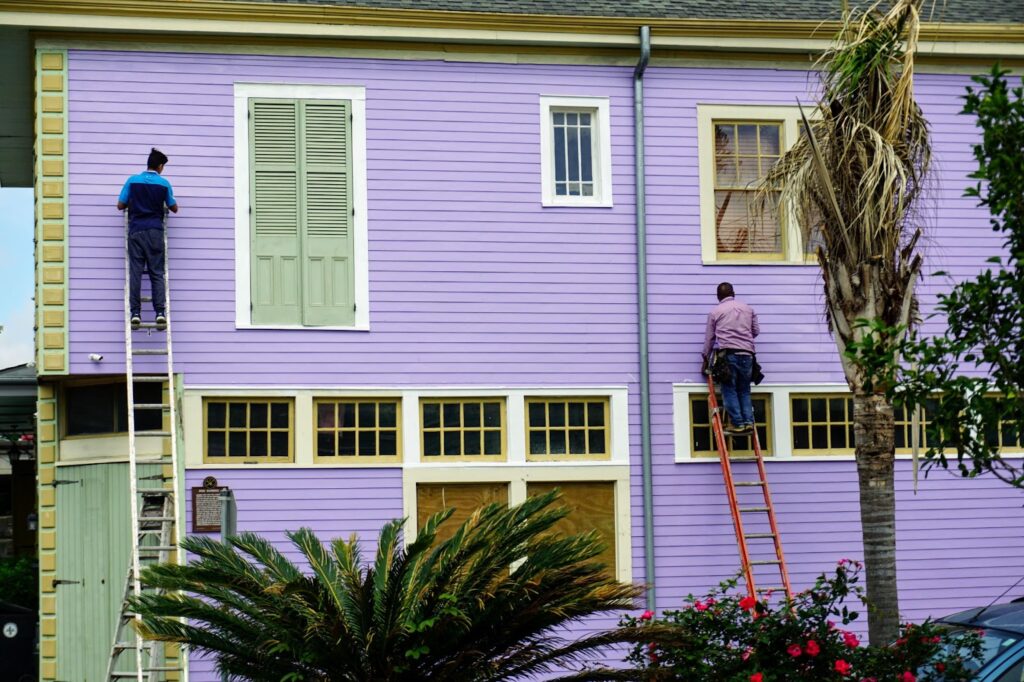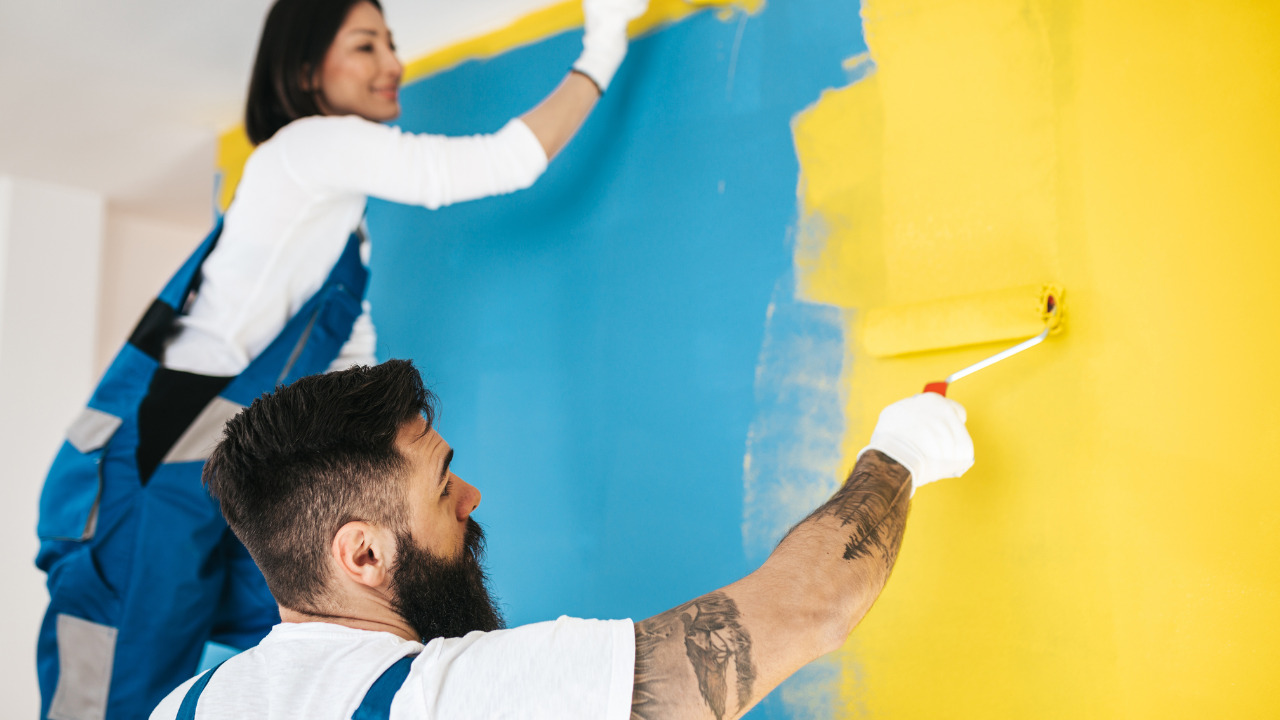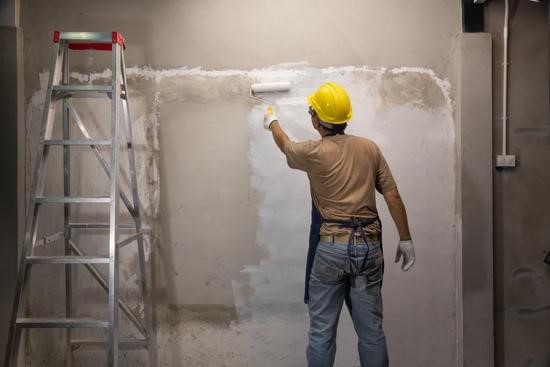Vinyl siding is commonly thought of as relatively maintenance-free. It’s because it generally doesn’t need re-painting over and over again. Vinyl comes with a color mixed with the material that is more or less permanent. However, this color can fade over time due to different ratios of sun exposure. This discoloration is unevenly in different areas of the house most of the time. That’s where the need to repaint comes in. So, how to paint vinyl siding?
Let’s get the answer to this and many more information about vinyl siding.
Table of Contents
How to Paint Vinyl Siding?
If the vinyl painting has discolored, you feel the need to repaint it, because the house exteriors may look old and outdated.
Whether the original paint color is faded or not, you might not like the color. So, the good news is you can paint vinyl siding. Or you can remove the old paint from vinyl siding, and repaint it.
However, just be aware that the siding will be only as maintenance-free as the paint you choose. Moreover, you should follow the rules and limitations when painting vinyl siding. Most importantly, you should check that painting the siding won’t void the warranty if it’s still in effect.
If the warranty permits painting the vinyl siding, ensure compliance with the manufacturer’s guidelines, such as the type and color of paint to use for the best results.
When to Paint Vinyl Siding?
Painting the vinyl siding is an exterior painting project. That’s why, you will need to find a few consecutive days of suitable weather.
Vinyl siding tends to expand in hot weather and contract in cold weather. So, try to avoid cold, hot, humid, and windy days.
Over the course of years, vinyl siding may leave dings and chips on the surface, which can be an eyesore of the beauty of your house. So, if these have started to occur on the vinyl siding, that’s your cue to start painting.
6 Steps to Painting the Vinyl Siding Successfully
If your home siding covers most of the exterior, painting vinyl siding can be a mega project. Good news for you, it’s not a complicated project.
You may be thinking of learning new vinyl-related terminologies and techniques to know how to paint siding. Fortunately, that’s not the case.
You can do vinyl side painting if you have ever indulged in a DIY home painting project before. So, how to prep vinyl siding for paint? Let’s go through all the steps:
Choose an Appropriate Vinyl Painting Color
Choosing the right color can be the most daunting task for some. You may feel difficult to know where to start. You can use a paint color match app to find a perfect color without much effort.
Fortunately, a few parameters can help you narrow down the options, and you can feel confident about the exterior house paint color.
Although the heat gain from the sun largely depends on the roof, the wall paint can also make an impact. Cool colors lead to less heat gain, so you can choose some cool tones.
Finally, the most cost-effective solution is to choose a color same or lighter than the current vinyl color. That’s because dark colors retain more heat from the sun and can make the vinyl siding more vulnerable to premature warping.
It may create other maintenance problems as well. So, choose the right vinyl painting color.

Make Sure the Paint Contains the Right Ingredients
It may seem tempting but don’t get the least expensive and easy-to-obtain paint can. You may save time and money by doing so, but your paint job will not look good.
If you want your paint job to last long on the vinyl siding, the paint product needs some specific details.
The paint for vinyl siding contains acrylic and urethane resins. These ingredients help vinyl in expanding and contracting, leading to coating stick. Choose a vinyl siding paint that has latex urethane, because it’s specifically formulated for exterior use.
Choose a Suitable Day for Painting
Before heading outdoors with your paint buckets to start painting, first, check the weather forecast for your area.
The ideal weather condition for outdoor painting is a mild temperature, low relative humidity, and an overcast sky.
If the weather is too hot, too sunny, or even too windy, the painting job will fail as it will not stick properly. It may look fine in the short term but paint applied on a hot, humid, or windy day will not adhere properly. Moreover, it can become prone to cracking and flaking over time.
Make sure the weather forecast predicts clear skies for at least a day after you are done with painting.
Prepare the Vinyl Surface
If you want to achieve a professional paint job, do a thorough cleaning of the vinyl siding before painting. Simply rinsing your house’s siding with running water from a garden hose won’t do it.
Your goal should be to remove all mold, mildew, and debris from the siding surface. You can make our own cleaning solution for the best results, by adding:
- ⅓ cup laundry detergent
- ⅔ cup powdered household cleaner
- 1-quart liquid bleach
- 1-gallon water
Use a clean cloth to apply the cleaning solution before painting the vinyl siding. Make sure to rinse off any remaining residue. Let the siding dry completely before going ahead with the painting.
While you are at it, you can clean the smoke residue of vinyl siding as well.
Set Up the Paint Supplies
Set up your work area and gather the supplies, tools, and materials used to paint vinyl siding. Now, it’s time to start painting. However, before going ahead, you may need to apply the primer to ensure the finished paint job stays consistent and has good adhesion.

Apply Two Coats of Vinyl Paint
After the primer gets dry, apply the paint with a roller or paint sprayer. But how to paint vinyl siding with sprayer? You can easily do that albeit a bit carefully so the paint doesn’t splash in different directions.
Coat the entire surface evenly, ensuring not to apply too much paint in any one section. You should do multiple light coats rather than one thick coat and this rule applies to all paint types.
When you finish coating the first paint layer, let it dry before moving on to the second coat. However, give the second coat almost 24 hours to dry before considering the project completed.
Your Home Siding Paint Renewal Awaits!
Painting a house’s exterior and doing vinyl siding paint may look like a hectic job. But you can easily do it if you are motivated enough for a new house exterior.
Just properly clean the siding before painting and choose the ideal weather day. If you carefully plan your painting job, the new paint can last up to 10 years or more.





